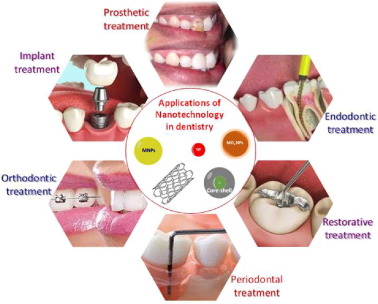Nanotechnology, the manipulation of matter on an atomic or molecular scale, is revolutionizing various industries, and dentistry is no exception. In recent years, researchers and dental professionals have been exploring the potential of nanotechnology to address various challenges in oral healthcare, from preventive care to restorative treatments. These tiny wonders are making a big impact on how we approach dental care.
One of the most promising applications of nanotechnology in dentistry is in the development of nanomaterials for dental restorations. Traditional dental materials like amalgam and composite resins have limitations in terms of durability, aesthetics, and biocompatibility. However, nanomaterials offer unique properties such as enhanced strength, improved aesthetics, and better resistance to wear and corrosion. Nanocomposites, for example, combine nanoparticles with conventional dental materials to create restorations that closely mimic the natural properties of teeth while offering superior performance and longevity.
Moreover, nanotechnology is also being leveraged to enhance the properties of dental implants. Titanium implants, which are commonly used in restorative dentistry, can benefit from surface modifications using nanomaterials to promote osseointegration and reduce the risk of implant failure. By modifying the surface structure at the nanoscale, researchers are able to improve the biocompatibility and bioactivity of dental implants, leading to better clinical outcomes and long-term success rates.

In addition to restorative dentistry, nanotechnology is also making strides in preventive care and diagnostics. Nanoparticle-based antimicrobial agents, for example, have been developed to combat oral pathogens and prevent the formation of dental plaque and biofilms. These antimicrobial nanoparticles can be incorporated into oral care products such as toothpaste, mouthwash, and dental floss to enhance their efficacy in fighting cavities, gum disease, and other oral infections.
Furthermore, nanotechnology is enabling advancements in diagnostic imaging techniques for early detection of dental problems. Nanoparticle-based contrast agents enhance the resolution and sensitivity of imaging modalities such as dental X-rays, CT scans, and MRI, allowing for more accurate diagnosis of dental caries, periodontal disease, and oral cancers. By detecting dental issues at an early stage, dentists can intervene promptly and provide appropriate treatment, thus improving patient outcomes and reducing the need for invasive procedures.

Beyond restorative and preventive care, nanotechnology holds promise for regenerative dentistry, where damaged or lost dental tissues can be regenerated using nanomaterials and stem cell therapy. Nanomaterials scaffoldings provide a conducive environment for cell growth and tissue regeneration, facilitating the repair of damaged dental pulp, periodontal ligaments, and alveolar bone. This regenerative approach to dental treatment offers potential solutions for conditions such as dental caries, periodontitis, and tooth loss, ultimately improving the quality of life for patients.
In conclusion, nanotechnology is unlocking new possibilities in dentistry, from enhancing the performance of dental restorations to improving preventive care and diagnostics. These small wonders are making a big impact on how we diagnose, treat, and prevent oral diseases, paving the way for more effective and personalized dental care solutions. As research in nanotechnology continues to advance, we can expect further innovations that will transform the future of oral healthcare, offering hope for healthier smiles and brighter futures.







Leave a Reply